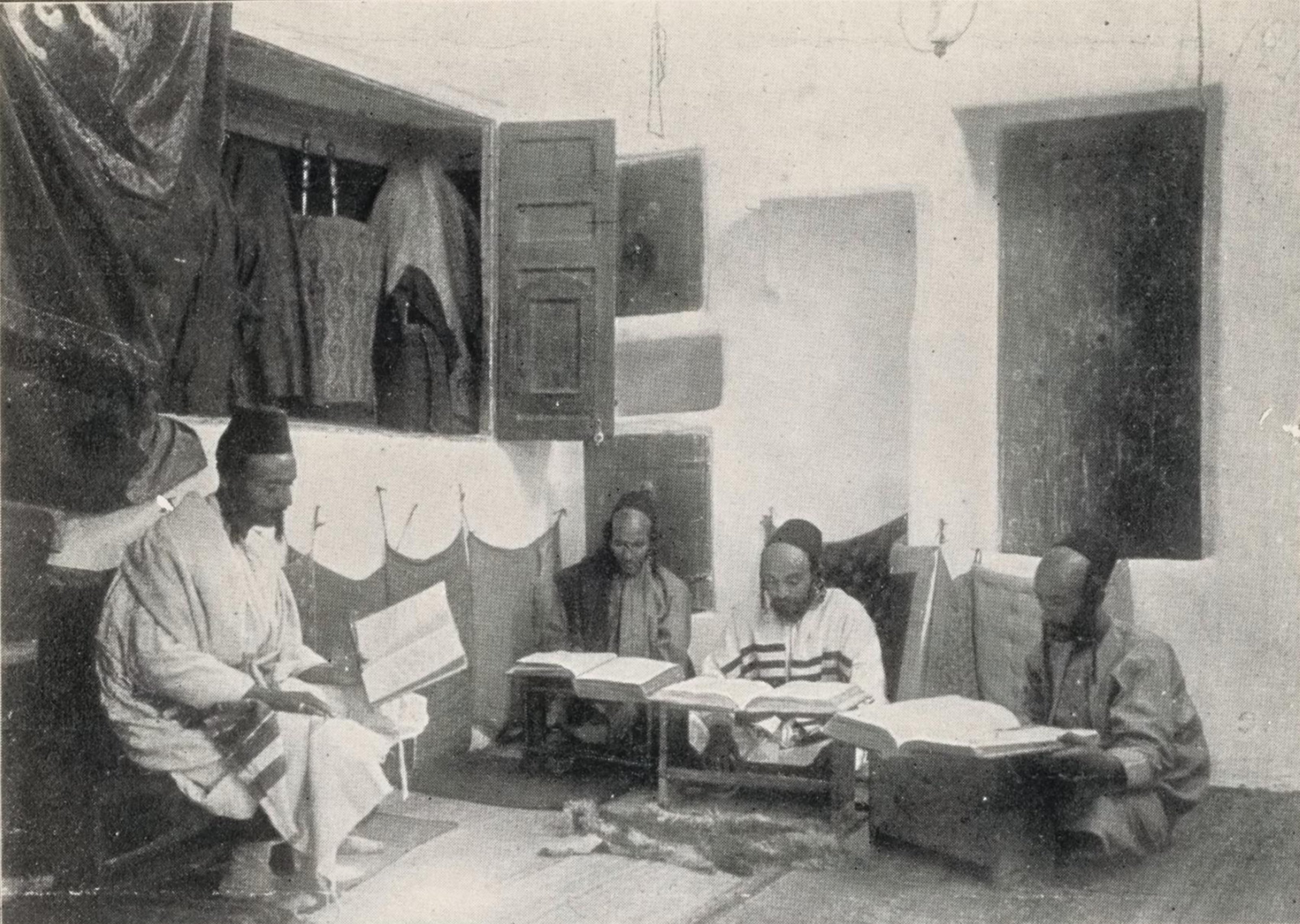

After 1948 and the establishment of the State of Israel, the Zionist interests involved populating the expropriated Palestinian lands with a Jewish population. Zionist aspirations had always been conceived with European Jews in mind, but Israel’s immediate need for people and labor meant that the focus shifted to Jewish populations in Arab countries—who Ben-Guiron chillingly compared to Africans brought to America through the transatlantic slave trade.1 The mass-migration that occurred following the events of the Nakba were not as natural as one may be persuaded to believe, leading Israeli authorities to launch a variety of strategies in an effort to promote said expatriation. The result was a number of operations, listed in this article, that managed to secure significant waves of immigration through an emphasis on the Arab world’s allegedly widespread antisemitism, and a resulting urgency to flee the territory. This narrative, once put into motion, would continue to shape conversations surrounding Arab Jews—or Mizrahi Jews, as they are referred to in Israel—and would simultaneously set a precedent for the current weaponization of Antisemitism claims by Israel and its supporters.

The seeds for this approach can be traced back to the founding figures of Zionism. Theodor Herzl himself understood antisemites to constitute Zionism’s “most dependable friends,”2 referring to the possibility of cooperating with antisemitic leaders and banking on bigoted wishes to banish Jewish people from Europe. In 1933, the Haavara Transfer Agreement between Hitler’s government and the Jewish Agency for Israel proved Herzl right, enabling large-scale Jewish immigration to Palestine by profiting from both Germany’s economic goals and objectives of racial restructuring. While the Nazi government had ordered Jewish emigrants to leave behind their property in Germany, the Haavara agreement allowed them to retain their assets if they emigrated to Palestine, transporting from to Germany as export goods. It was under this arrangement that 50,000 Jews moved to Palestine.


It’s thus that antisemitism, depicted as an enemy, would in reality become a Zionist tool for ensuring allies as well as a demand for Jewish immigration to Palestine—from Arab countries in particular. It is important to underline that the post-1948 Arab world was not, by any means, void of anti-Jewish discrimination, and that antisemitism was present in these societies and makes it necessary to distinguish between real and false-flag attacks against civilians. The foundation of the Israeli state meant growing tensions that would make Arab Jews targets of suspicion.3 Viewed as possible spies, these communities were subjected to property and confiscation, arrest, execution, and widespread contempt. Nevertheless, many lived relatively peaceful lives and were not under direct threat. Of course, that did not stop the Israeli state from embellishing and even committing the Arab world’s antisemitism.

In the late 1940s and early 1950s, for example, authorities persecuted Jews involved—or suspected to be involved—in the Zionist underground’s activities in Iraq4. And while anti-Jewish sentiments rose from the Zionist threat, reports regarding the harassment of other Iraqi Jews were largely inflated, with the Mossad for Immigration’s files entirely fabricating a March 1949 hanging of Jewish people. The Mossad fomented international furor against Iraq with the intention of cornering the government into allowing Jewish immigration to Palestine. This culminated with a series of bombings that, from 1950 to 1951, targeted synagogues, libraries, cafes and homes, and thus killed and injured Iraqi Jews, while cultivating terror in the community. According to British-Israeli historian Avi Shlam, these were false flag operations undertaken by the Mossad and intending to drive Jews out of Iraq so as to accelerate their arrival to Palestine.5 Indeed, Israel and the British-sponsored Iraqi regime eventually collaborated, and Iraqi Jews evacuated their homes for Israel.


Conjuring up the spectre of antisemitism similarly served as a strategy in other cases. From 1949 to 1950, Operation Magic Carpet brought Yemenite Jews to Israel through staunch persuasion. Israeli messengers brought to Yemen a melange of encouragement, fear of impending disaster, and religious longing for a promised land, to produce desire for Israel-occupied Palestine in the country’s Jewish population.6 Though a significant portion of the Yemeni-Jewish population lived in dire poverty and was subjected to discrimination, another sizable fraction lived stable lives, working as craftsmen, goldsmiths, farmers and merchants and held a respectable status in society. During this time, the League of Arab States had passed a bill to ban Arab-Jewish migration to Israel, foreseeing that they would be offered the confiscated homes and belongings of Palestinians - but Israeli authorities bypassed this ban using bribes to local authorities and collaborating with British colonial authorities to airlift Yemeni Jews to Israel7. A similar approach was taken towards the Soviet Union, which Israel framed as an unsafe and antisemitic place for Jews. The pogroms in Russia had taken place under the last Czar who was famed for his antisemitism, yet, the first years of the Soviet Union were defined by the Bolshevik’s overturning of antisemitic laws which gave full legal equality to the Jewish people as well as their victorious fight against the Nazis.8
The strategic manipulation of fear and the broader narrative of Arab antisemitism laid the groundwork for how the term “antisemitism” would be weaponized in the decades to follow. In recent years, accusations of a post-1948 widespread attack against Jewish communities in the Arab world have reemerged, no longer in hopes of luring in more Arab Jews, but rather to justify Israel’s billion-dollar request from Arab countries,9 and to absolve the state from its occupation of Palestine. In parallel, antisemitism charges have become a tool for silencing criticism of Zionism and Israeli policy. By equating any criticism of Israel with antisemitism, Israeli officials effectively stifle dissent, particularly in the West. Just as the Zionist movement capitalized on the image of the Arab world as a threat to Jewish safety in the early years of the Israeli state, today’s political landscape frequently invokes the term “antisemitism” to deflect any critique of Israel’s treatment of Palestinians. Peaceful Jewish life and communities outside of Israel are a fundamental threat to the very foundations of Zionism which uses global antisemitism as the pillar of Israel’s false right to exist. It’s thus that framing Arab Jewish emigration as a flight from antisemitism laid the foundation for the modern political discourse surrounding antisemitism.
